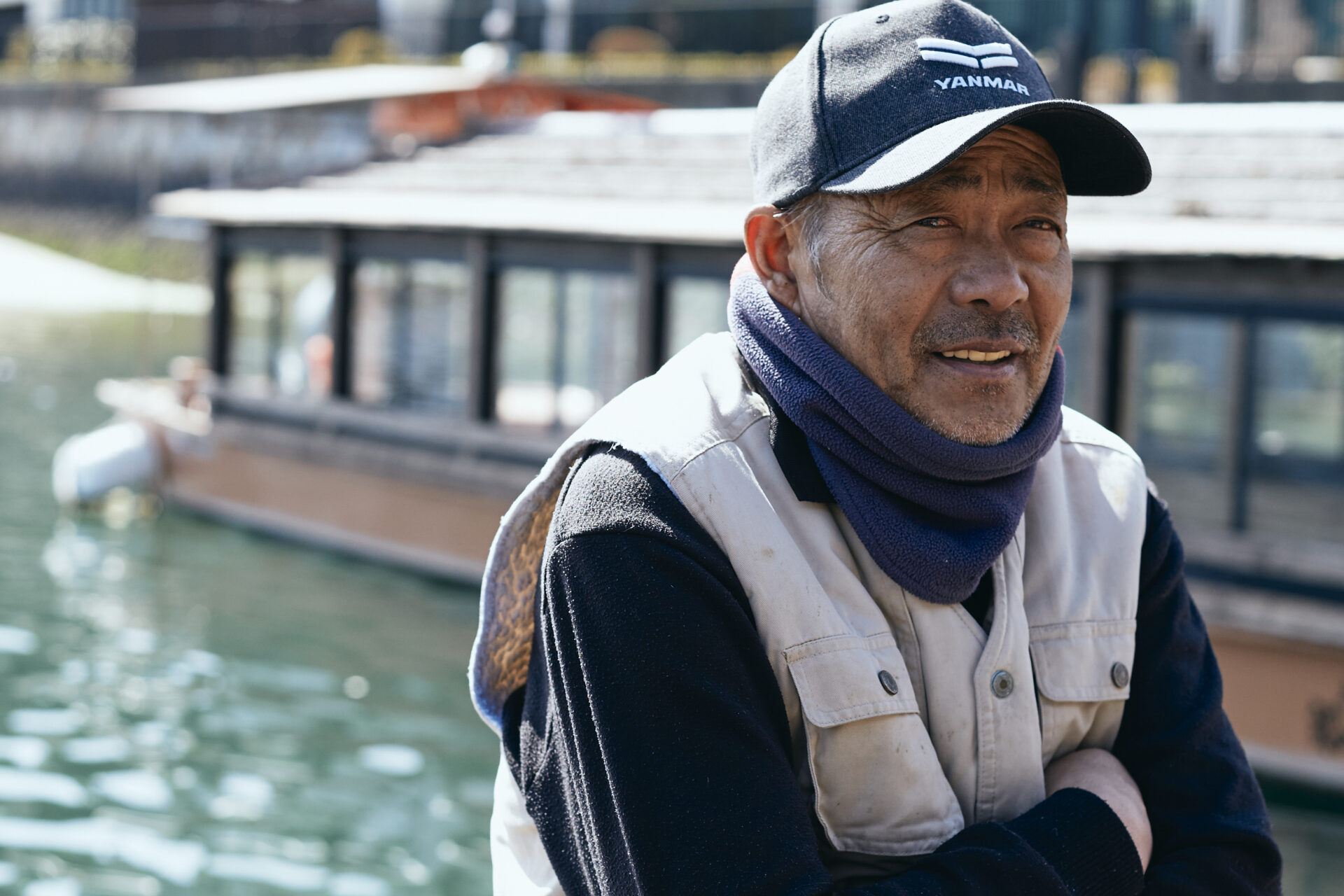
Carrying Over 300 Years of Hiroshima Oyster History: A Desire to Pass on to the Next Generation

島田 俊介
Shunsuke Shimada
Hatsukaichi [Hiroshima]
Shunsuke Shimada
Chairman of Shimada Suisan Co., Ltd., a prestigious Hiroshima oyster production company with a tradition spanning over 300 years. Joining the family business at 17, he has dedicated over 40 years to oyster farming. Additionally, he has been involved in tourism projects, such as "Kaki Goya" and oyster lifting experiences, continuing to convey the allure of Hiroshima oysters.
Hiroshima, one of Japan's leading oyster production areas, is renowned for its rich and flavorful Hiroshima oysters, cherished nationwide. The cultivation of oysters in this region has a long history, tracing back to the early Edo period over 300 years ago. Shimada Shunsuke, Chairman of Shimada Suisan Co., Ltd., inherits this tradition. Near the World Heritage site of Miyajima, he engages in oyster farming, offers oyster harvesting experiences to tourists, and runs "Kaki Goya" (oyster huts) where visitors can eat oysters directly from the producers at the production site, among other wide-ranging activities. What kind of oyster culture has Mr. Shimada fostered in Hiroshima? We listened to his story.
Oyster farming is a job that cannot be done without understanding nature.
“Ever since I can remember, the sea was always in front of me, and my father was harvesting oysters. That’s the environment I grew up in.”
Mr. Shimada says, laughing, that the history of Shimada Suisan, founded in 1688, is so extensive he’s lost track of how many generations have been involved.
“I was naughty when I was young and didn’t study much (laughs), and I entered the family business when I was 17. I watched my father’s back as he worked all my life, so it was a natural progression for me to get into oyster farming. It wasn’t an era where things were taught step-by-step, so I learned oyster farming by observing my father’s work and consulting with peers in the industry.”
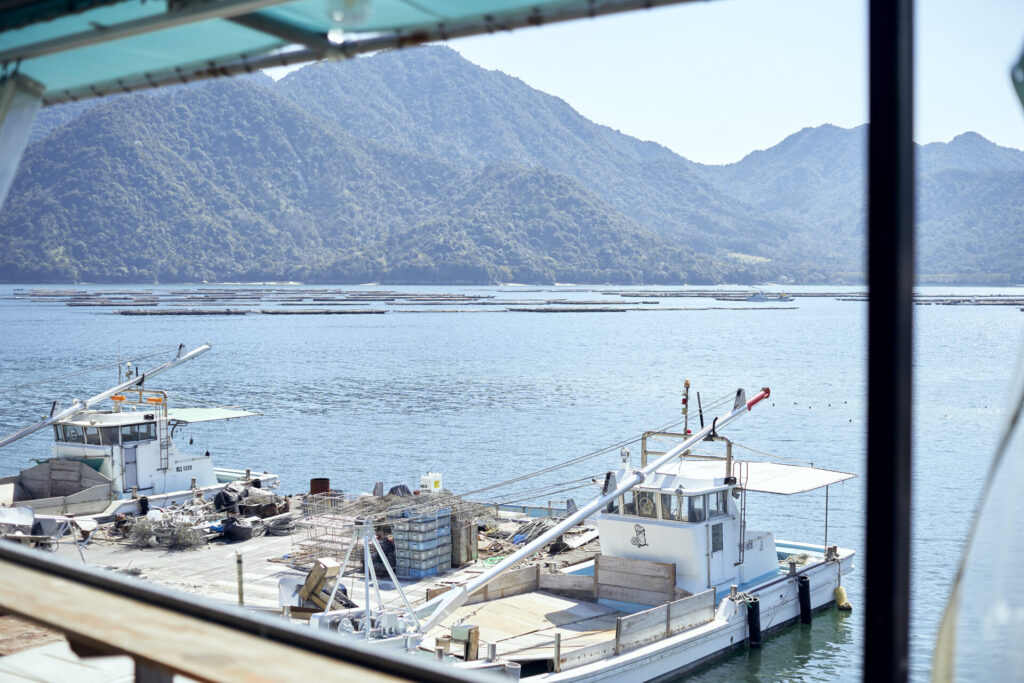
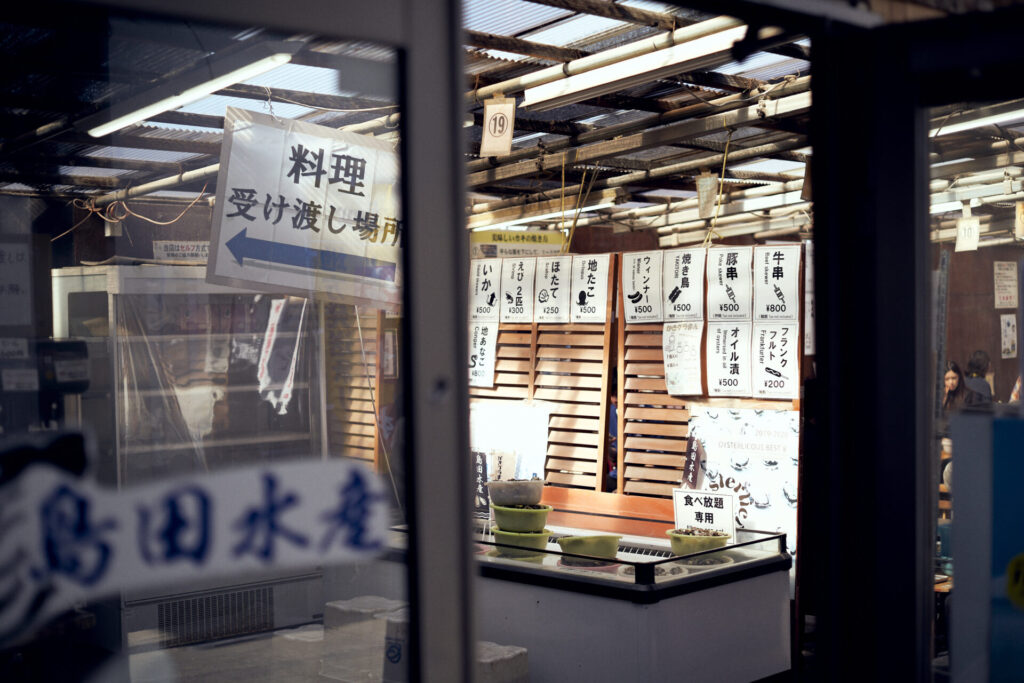
Mr. Shimada says he adapted to the work “relatively quickly.” However, oyster farming is fraught with challenges. “You’re dealing with nature. The growth conditions change based on the food available and the condition of the sea. What worked last year might not work this year. It’s a job that requires getting close to and understanding nature.”
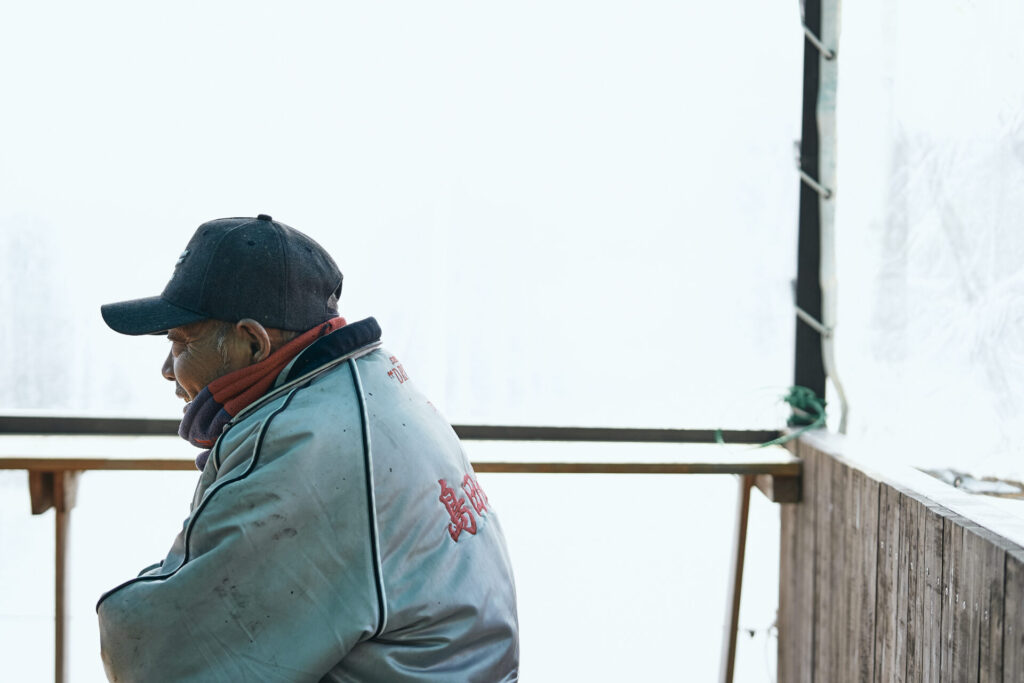
As he deepened his understanding of the intricacies of oyster farming, Mr. Shimada, about 20 years into his career, embarked on a new venture: the development of the branded oyster “Aki no Hitotsubu.”
“The quantity of Hiroshima oysters is high, and they’re commonly seen in supermarkets nationwide, but they lack a premium feel. I wanted to shift from quantity to quality… That’s why we developed ‘Aki no Hitotsubu.'”
After numerous failures and about five years of development with fellow producers, they succeeded in breeding a new variety. The producers handle everything from seed collection to cultivation. “Aki no Hitotsubu,” known for its strong sweetness and fresh aftertaste, has become popular, with feedback like “I’ve never tasted an oyster like this before” and “I didn’t like oysters, but I can eat these.”
Embracing over 300 years of tradition, Mr. Shimada is ready for new challenges.
In Hiroshima Prefecture, Japan’s largest producer of oysters※, the calm Seto Inland Sea with its minimal wave action provides an ideal environment for oyster farming, contributing to the oysters’ rich flavor.

The history of Hiroshima oysters dates back more than 300 years.
“Originally, oyster farming began in Kusatsu Bay in Hiroshima City, and the oysters were transported to Osaka by boat to be sold. From there, a style known as ‘Kaki Fune,’ where people ate oyster dishes on boats moored along the riverbanks, emerged.”
Over time, “Kaki Fune” spread throughout the region, making Hiroshima oysters renowned across the nation. However, circumstances changed post-war.
“After riverbank construction work in Osaka, ‘Kaki Fune’ was removed. Later, the number of ‘Kaki Fune’ dwindled, and by the Taisho era(1912-1926), only one operated by the Shimada family remained. This sole ‘Kaki Fune’ continued until 2001 but closed due to the health issues of my uncle managing it, ending over 300 years of history.”
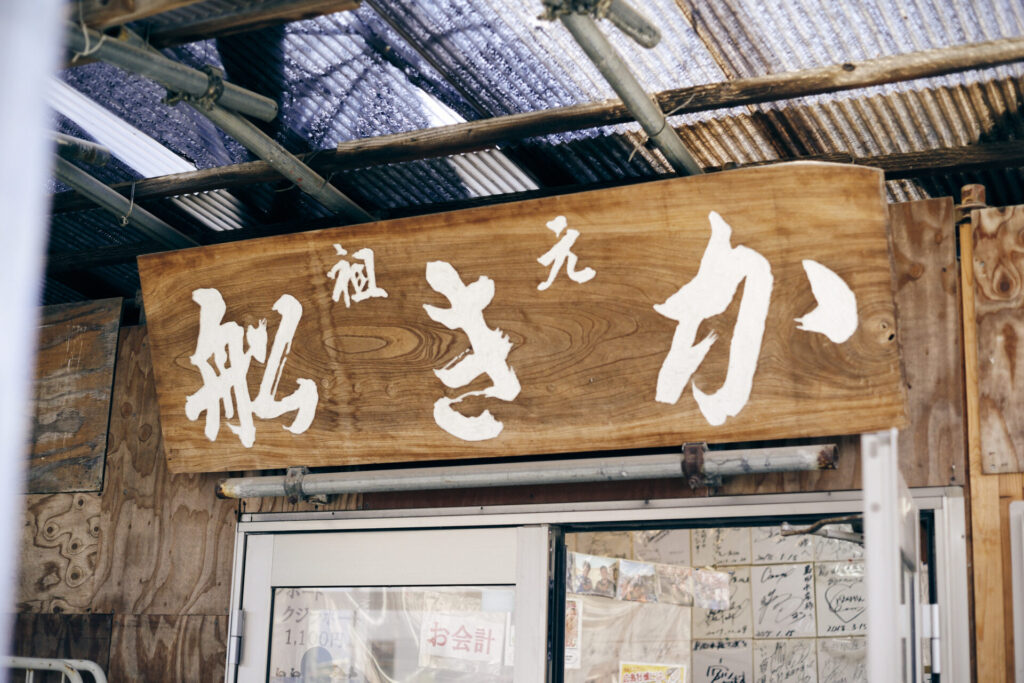

Mr. Shimada was entrusted with the signboard of “Kaki Fune” by his uncle, who hoped for its revival someday. Though different from the traditional “Kaki Fune,” he created a space where people could taste oysters directly from the producers: the “Kaki Goya.”
It is completely different from the traditional “oyster boat,” says Mr. Shimada, while expressing his respect for the “oyster boat” that has been in existence for generations.
“When we were developing ‘Aki no Hitotsubu,’ oyster producers from across the country came for training. It was the time when a producer from Kyushu mentioned they had created a space where producers could serve meals directly. It made sense that the experience of eating oysters, understanding how they’re harvested, and knowing who cultivates them would entirely change the appreciation of the taste. Motivated by a desire to have more people understand the effort behind producing oysters, we started ‘Kaki Goya.'”
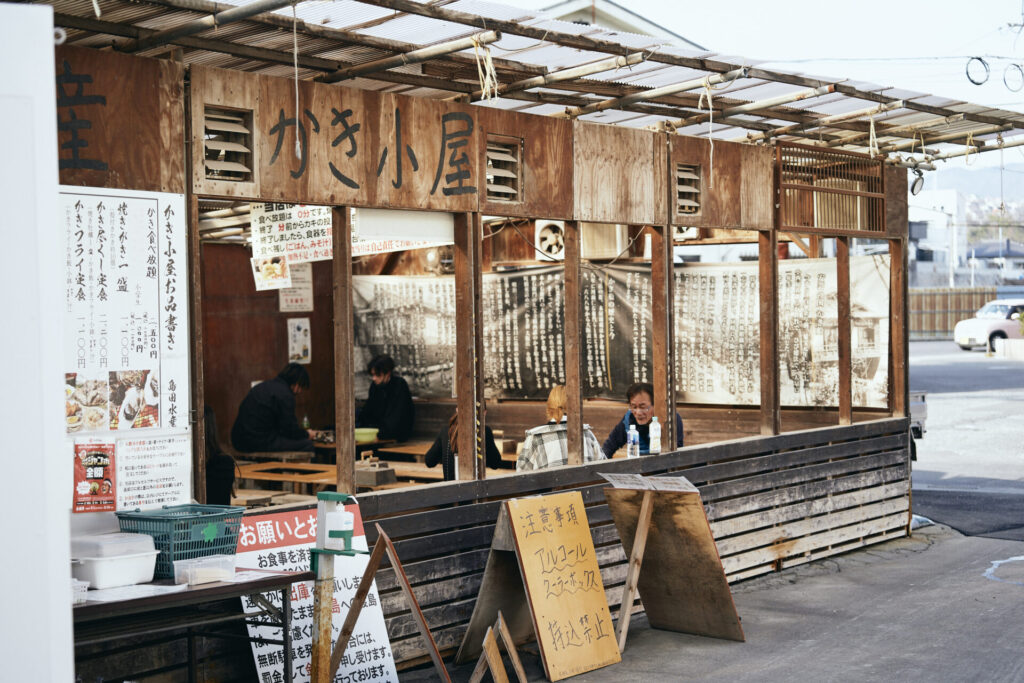

While dining establishments operating ‘Kaki Goya’ aren’t uncommon, it’s a different story when producers themselves run ‘Kaki Goya’ at the production site. Located near the World Heritage site of Miyajima, the ‘Kaki Goya’ initiated by Mr. Shimada and his colleagues attracts many visitors.
“It’s great to be able to communicate directly with consumers. Getting immediate feedback on the oysters we’ve cultivated is invaluable. Whether it’s positive feedback or suggestions for improvement, all of it is appreciated. Seeing who eats our oysters and their reactions—something we couldn’t do when just wholesaling—provides a fulfilling connection. Being able to see consumers’ faces, get evaluated, and hear their stories is perhaps the most favorable environment for those of us cultivating oysters.”
※According to the Ministry of Agriculture, Forestry and Fisheries’ Marine Fisheries Production Statistics Survey in 2020.
“We have a responsibility to convey the charm of Hiroshima oysters.”
The culture of oyster farming in Hiroshima is deeply rooted, yet evolving times bring new challenges.
“The number of successors is gradually decreasing. At its peak, there were nearly 700 oyster farmers, but now there are less than half of that. It’s said that in ten years, the number might drop below 100. Nonetheless, I hope the environment where Hiroshima oysters can be enjoyed continues indefinitely. The first step is to increase the number of bearers of this tradition. To do that, it’s essential to continue conveying the allure of Hiroshima oysters.”
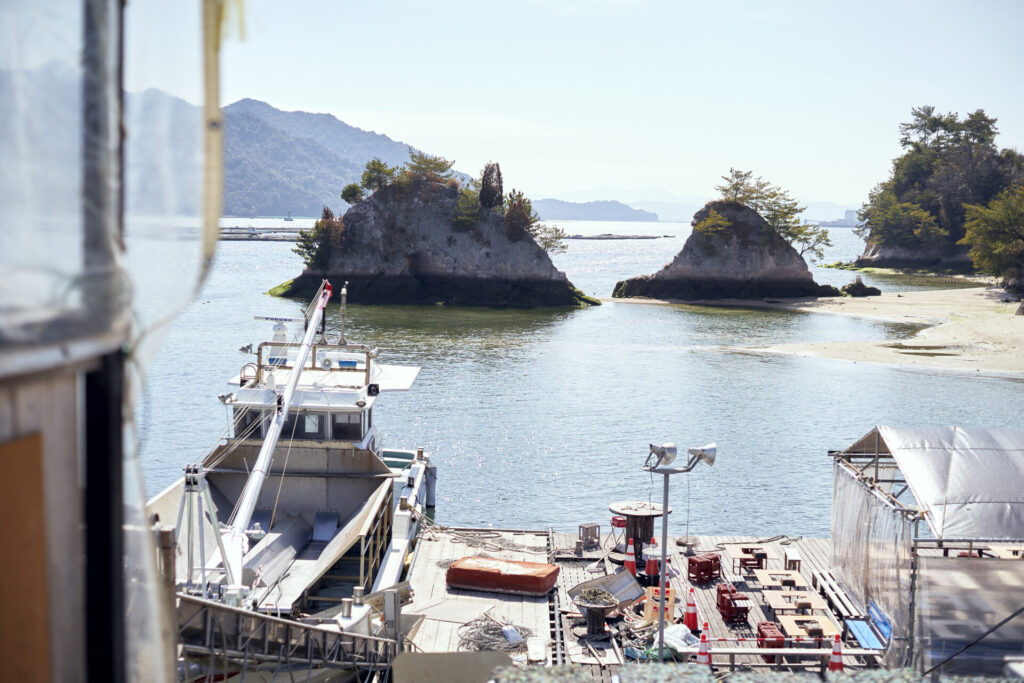
With this sense of purpose, Mr. Shimada has not only run ‘Kaki Goya’ but also engaged in stay-type tourism content like harvesting experiences.
“I believe there are things that can only be conveyed by those of us who face oysters every day. It’s something you can’t understand by just seeing them at the supermarket. We need to pass on this knowledge at the production site, through the producers’ actions and words. We have the responsibility to do so. If we don’t convey the charm of Hiroshima oysters, who will? I’d be happy if the role of continuing to share the appeal of Hiroshima oysters could be passed on to the younger generation of producers.”
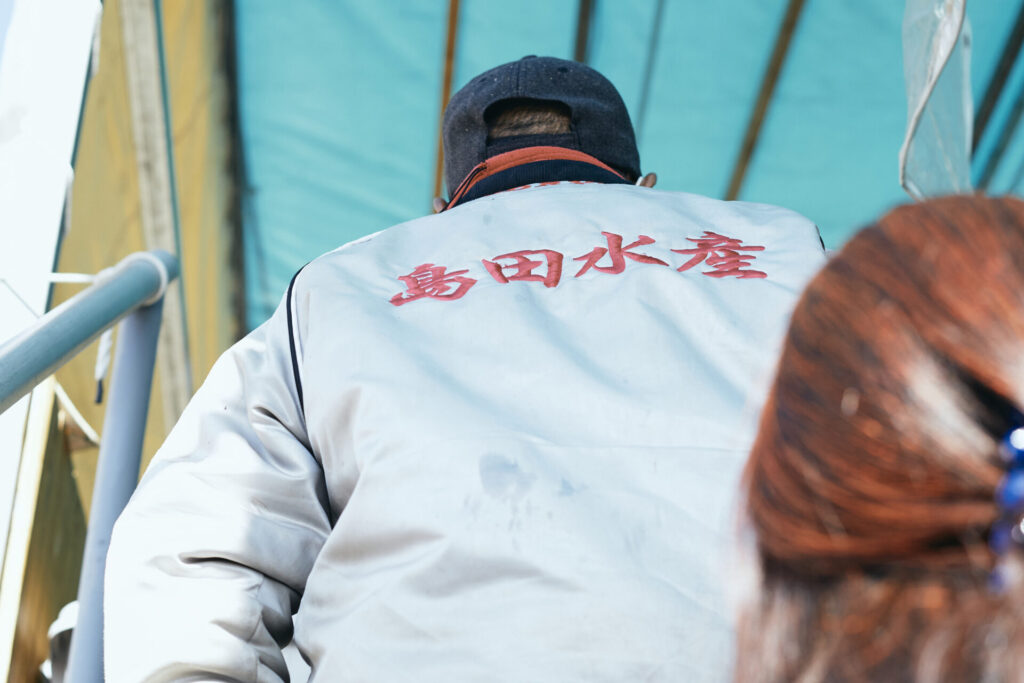
After more than 40 years in the world of oyster farming, Mr. Shimada is preparing to pass the baton to the next generation.
“I’ve tried various things over the years. It feels like it’s been both a long and short time, both hard and enjoyable. I don’t have plans to start anything new. I hope to support the younger generation so they can carry out their activities freely.”
Now, as Mr. Shimada serves as chairman, his son is facing oyster farming as the successor. “It would be wrong to take their achievements for myself,” he says with a smile, watching over the next generation of oyster cultivators.
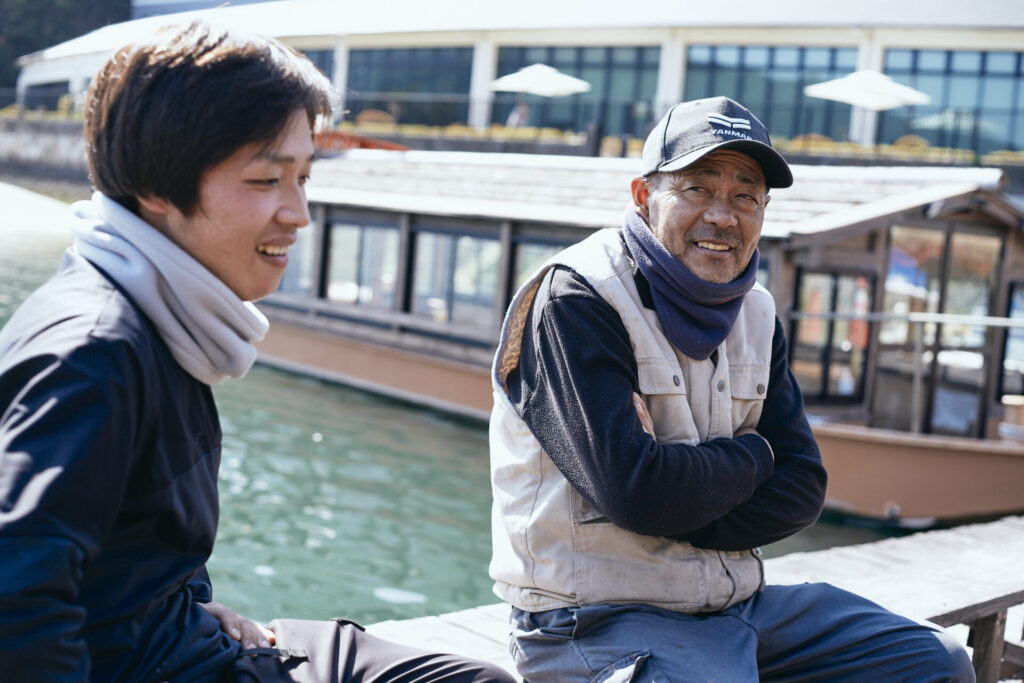
(Connecting in the Region)
“I want to maintain the quality of Hiroshima oysters that makes people say, ‘This is delicious.’ If it’s not tasty, it won’t be passed on to the future. It’s not just about producing a lot or growing them large; it’s the continuous commitment to deliciousness that will keep people loving it and ensure its legacy.”
